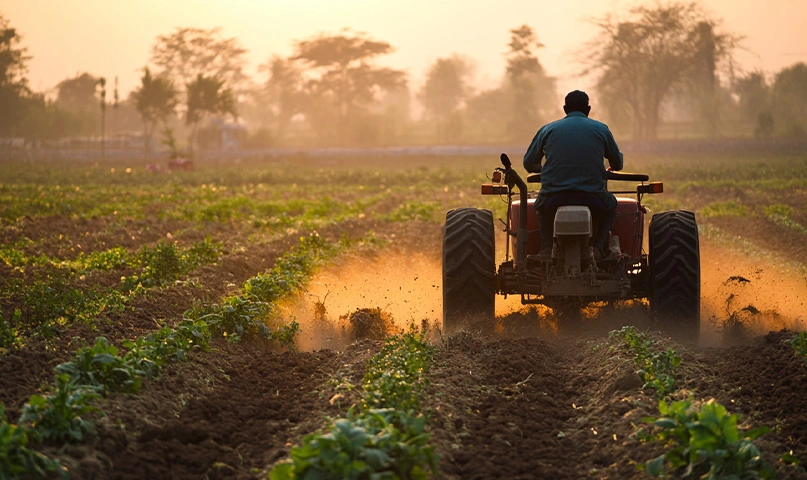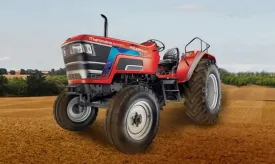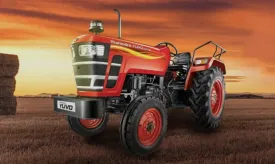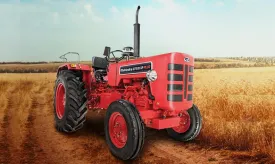Exploring different types of ploughs in agriculture
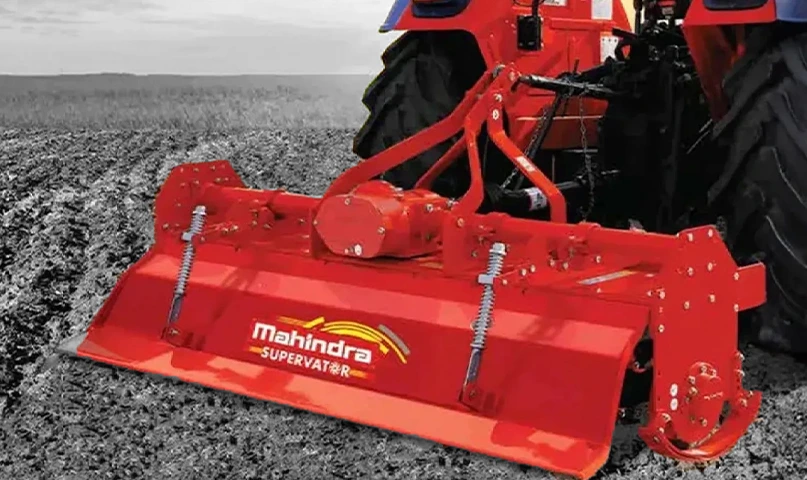
Ploughing is one of the oldest and most essential practices in agriculture, providing the foundation for successful crop production. The plough is a versatile tractor implement that helps in soil preparation by breaking up the ground, incorporating organic matter, and improving soil aeration. With various soil conditions and farming requirements, different types of ploughs have been developed to meet specific needs.
In this blog, we'll explore the different types of ploughs in agriculture, their unique features, and how they can benefit your farming operations.
1. Mouldboard plough
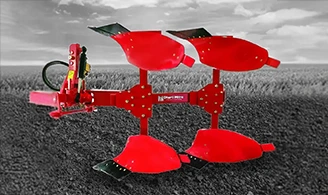
The mouldboard plough is the most traditional and widely used plough in agriculture. Its design consists of a large, curved blade (the mouldboard) that slices through the soil, turns it over, and creates furrows.
Features:
- Function: It is designed to cut, lift, and invert the soil to a deeper depth, typically ranging from 6 to 8 inches.
- Best for: Hard or compacted soil, heavy clay, and sod removal.
- Ideal for: Preparing land for row crops, burying crop residues, and improving soil aeration.
Benefits:
- Mouldboard ploughs are ideal for deep tillage and breaking through hard, compacted layers.
- They incorporate organic matter and crop residues deep into the soil, enriching the soil's fertility.
- The inverted soil can help in weed control by burying weeds and their seeds.
2. Disc plough
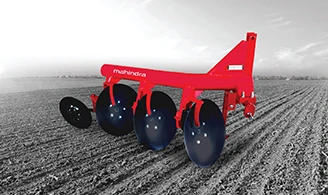
The disc plough is a powerful plough that uses rotating discs to cut and turn the soil. It is designed for tougher soil conditions, such as clay, hardpan, and stony fields.
Features:
- Function: Instead of a traditional blade, the disc plough uses concave discs that rotate to slice through the soil and cut through tougher surfaces.
- Best for: Hard, stony, or dry soil conditions where mouldboard ploughs might struggle.
- Ideal for: Land with a lot of debris or compacted soil, as it doesn't get clogged as easily.
Benefits:
- Disc ploughs are excellent for working on land that is stony, rocky, or covered with residue from previous crops.
- They can break through hard soil layers and are more efficient in dry, compacted conditions compared to mouldboard ploughs.
- They require less power to operate on difficult terrains.
3. Chisel plough
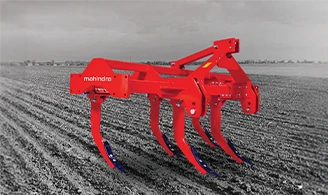
The chisel plough is designed for deep tillage without completely inverting the soil. It uses a set of pointed, chisel-like blades that break up the soil at greater depths, while leaving the surface relatively undisturbed.
Features:
- Function: It penetrates deeper into the soil compared to other ploughs, typically around 8 to 12 inches. However, it doesn't turn the soil over completely.
- Best for: Breaking up compacted soil layers and improving soil structure.
- Ideal for: Fields with hardpan or compacted layers that need to be broken up without disturbing the upper soil layers too much.
Benefits:
- The chisel plough works well on deep-rooted crops and improves water infiltration by breaking through compacted layers.
- It minimizes soil erosion by leaving the topsoil relatively undisturbed.
- It's more fuel-efficient compared to mouldboard ploughs, making it a cost-effective option.
4. Subsoiler
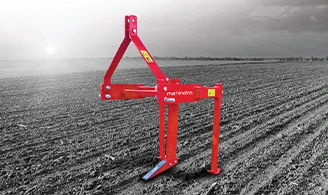
A subsoiler is a specialized type of plough that is designed to break up soil at deeper levels than other ploughs. Unlike other ploughs, it doesn't disturb the surface of the field; instead, it targets deeper layers of compacted soil.
Features:
- Function: The subsoiler consists of a deep, sturdy point that penetrates the soil to break up compacted layers. It typically works at depths of 12 to 20 inches.
- Best for: Subsurface soil compaction, soil aeration, and improving root penetration.
- Ideal for: Deep tillage in areas with significant compaction, such as underneath fields where soil compaction prevents root growth and water movement.
Benefits:
- A subsoiler can break through very compacted soil layers, allowing roots to grow deeper and water to percolate more easily.
- It enhances soil aeration, improving overall soil health and making it easier for plants to access nutrients.
- Subsoiling is particularly beneficial for reducing waterlogging and improving soil structure over time.
5. Rotary plough (rotavator)
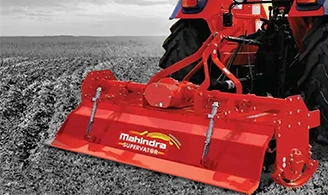
The rotary plough, often referred to as a rotavator, is a machine that uses rotating blades or tines to till the soil. It's similar to a rotary tiller but typically used on a larger scale.
Features:
- Function: It uses a series of rotating blades to chop and mix the soil, breaking it up into fine particles. It operates at shallower depths (around 2-6 inches) compared to deep ploughs.
- Best for: Shallow tillage, incorporating organic matter, and preparing seedbeds.
- Ideal for: Small to medium-sized fields and for crops like vegetables, grains, or flowers that need a fine, well-aerated soil bed.
Benefits:
- It provides excellent soil aeration and is ideal for mixing fertilizers or organic matter into the soil.
- It's highly efficient and easy to operate, especially on smaller plots.
- The rotary action helps break up weeds, reducing the need for additional weed control.
6. Reversible plough
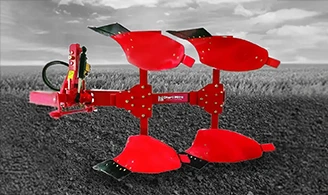
The reversible plough is an advanced version of the traditional mouldboard plough. It allows the operator to switch the direction of the plough, making it more efficient and reducing the need to turn around the tractor after each pass.
Features:
- Function: It can plough in both directions by reversing the plough's angle, which allows the operator to make continuous passes across the field without turning the tractor around.
- Best for: Large-scale farming operations where efficiency and speed are important.
- Ideal for: Straightforward ploughing of large fields, especially where there's no need for constant turning around.
Benefits:
- It reduces field time by allowing continuous ploughing without the need for turning.
- The reversible plough improves soil mixing and provides even tillage, which can enhance soil structure.
- It offers better maneuverability in larger fields, making it a great tool for professional farmers.
7. Mounted vs. trailed ploughs
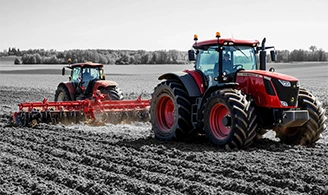
In addition to the different types of ploughs, it's also important to distinguish between mounted and trailed ploughs, which refer to how the plough is attached to the tractor.
- Mounted ploughs: These ploughs are attached directly to the tractor's three-point linkage. They are more compact, lighter, and generally more affordable, making them ideal for smaller fields and lighter farming operations.
- Trailed ploughs: Trailed ploughs are larger, attached to the tractor via a drawbar. They are typically used for larger-scale farming operations due to their higher working capacity and ability to handle more extensive fields.
Conclusion
Choosing the right type of plough for your farming operation can significantly impact soil health, crop yields, and overall productivity. Mouldboard ploughs, disc ploughs, chisel ploughs, subsoilers, and other plough variations are all designed for different soil conditions and farming needs. By understanding the specific benefits of each type of plough and selecting the one that best suits your land and crops, you can improve your soil structure, increase efficiency, and lay a strong foundation for your agricultural success.
Each plough type serves a unique purpose, so knowing when and how to use them will make a big difference in achieving optimal soil conditions and maximizing your farm's potential.










